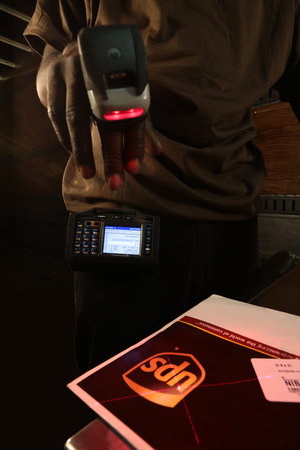Wearable Bar Code Scanners Offer Ease of Use and Durability
 If you've ever used a bar code scanner or watched another person operate one, you know they are designed for easy operation. Just point and shoot.
If you've ever used a bar code scanner or watched another person operate one, you know they are designed for easy operation. Just point and shoot.
That's why so many bar code readers are the "gun" variety. Whether corded or cordless, these types of bar code scanners offer rapid data entry capabilities, along with the ability to scan from various angles and heights.
And while handheld bar code scanners will likely continue as one of the most common styles of readers, another type is gaining traction for specific applications.
Designed for environments where people need to keep their hands free to successfully complete daily tasks, wearable bar code scanners also offer a higher comfort level for the user, especially over long periods of time.
Most wearable bar code scanners have at least two parts, the imaging piece, usually worn on a finger or forearm, and the receiver.
And with the rise of Bluetooth technology, it's even easier to scan bar codes wirelessly, while keeping hands free.
One company that's using wearable bar code scanners to impact productivity is the international shipping giant UPS. Using devices by Motorola Solutions, these hands-free imagers are worn on the finger along with a terminal worn on the employee's wrist or hip.
Compared to "point and shoot" bar code scanners, these so-called "ring" scanners use bar code label sensing technology to identify and scan bar codes much more quickly.
In an interview with The BarCode News, Jerry McNerney, Motorola Solutions Senior Director of Enterprise Marketing in North America, discussed the advantages of wearable scanning solutions.
"Very often in the enterprise environment, people need to have their hands free to do their work (effectively)," McNerney said. "What we've been doing with UPS and other key customers is giving them the ability to have a mobile device on their forearm (or) lashed to a belt on their waist. And the wireless technology, Bluetooth, removes the physical connection between the ring scanner and the device on the belt."
In the warehouse environment, there's also the issue of durability and sustaining battery life during an entire 8-hour shift.
"In many ways, UPS is a great example of the extremes of durability (for a bar code scanner), brushing up against boxes all the time, dropped from someone's hand to the hard floor," McNerney said. "(Wearable bar code scanners) are proven, they're reliable for these harsh environments."
With these advantages, it's not surprising wearable bar code scanning systems are replacing more traditional setups. Now if we could just train the scanners to operate during our lunch breaks.
See related articles:
5 Best Barcode Scanners Under $500 for Mobile Couponing - ... tend to frustrate buyers eager for a discount. Historically, small-to-medium-sized businesses struggled to implement technology for mobile couponing. Costs for bar code scanners and software were simply ...
Bar Code Imaging: Trends in the Americas - ... the most significant trends we have been tracking with our coverage of the bar code scanner market is the ongoing (and impending) migration from laser scanners to imaging technology. Today we're focusing ..
This Bar Code Scanner Uses a Camera Not a Laser - ... against a neutral black background. Software helps "teach" the bar code scanner to recognize a variety of fruits and vegetables, even when the items are moving past the camera at a fast rate of speed. ...{jcomments on}
